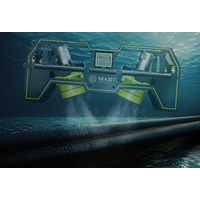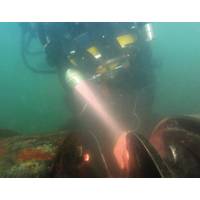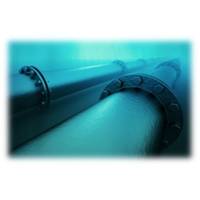
OEG Offshore Invests in Electric Subsea Excavation Solution Firm
reduces health and safety risks on the vessel by eliminating hydraulic hoses and other components associated with older industry technology."The developers claim that the system also "massively" reduces CO2 emissions and fuel costs by up to 40% and eliminates the risk of high pressure oil leaks into the marine environment

Leak Detection Sonar Deployed in the US Gulf
and accurate detection and classification of the equivalent release of 100 barrels/day of oil out to 244 meters, a distance only constrained by the trial environment. This was achieved within seconds of the simulated leak occurring. Sentry’s capability, however, covers 100 barrels/day mono-phase oil leaks at distances of up to 740 meters. For mono-phase gas leaks, the system is capable of detecting down to just 1 barrel/day at 500 meters or 100 barrels/day (as measured at depth) at 1,000 meters.According to Sonardyne, the system's ability to accurately localize leaks is unique to the Sentry
Brazil Regulator Rejects Total Study on Drilling at Amazon River Basin
suspended indefinitely. The agency wants the company to address how to limit the impact on marine mammals and turtles, clarify models for how oil in the water would disperse itself as well as address Ibama's initial rejection of Total's proposals for environmental monitoring and other projects. Oil leaks in the Foz do Amazonas basin, named for its location near the mouth of the Amazon river, could wreak havoc on the rainforest in Brazil's far northern Amapá state in addition to harming the reef, scientists and activists say. Total had said it expected a decision from Ibama this year and
Aker's Capping Technology to Limit Drilling Risks
subsea component for the system being developed by Marine Well Containment Company to limit environmental risks from oil and gas production in the U.S. Gulf of Mexico. The Subsea Containment Assembly, or SCA, is designed to contain a well-control incident by connecting and creating a seal to prevent oil leaks. It can also be used in a cap-and-flow plan to direct fluid to vessels on the surface. The technology works under pressures as high as 15,000 psi. The equipment was delivered to Marine Well Containment Company's team in Ingleside, Texas. It weighs 170 tons and consists of a stack of adapters
Noble Pleads Guilty to Enviro Charges Surrounding Kulluk
main propulsion system, including its main engine and its propeller shaft, resulting in engine shut-downs, equipment failures, and unsafe conditions. At times, the condition of the Noble Discoverer’s main engine also created high levels of exhaust in the engine room, multiple sources of fuel and oil leaks, and backfires. Noble acknowledges that it failed to report any of these hazardous conditions to the U.S. Coast Guard. The Noble Discoverer was initially detained in Seward by the Officer in Charge, Marine Inspection for the Western Alaska zone, following a Coast Guard Port State Control examination

MTR 100: Sonardyne International Ltd.
conventional ships. • Sonar Imaging – Sonardyne sonar imaging expertise protects vulnerable waterside facilities and vessels from the threat of attack, enables AUVs such as the Bluefin-12 to gather pixel-perfect seabed images, monitors a billion cubic feet of water for oil leaks and navigates hazards for vessels. (As published in the July/Aug 2014 edition of Marine Technology Reporter - http://www.marinetechnologynews.com/Magazine

Oil Leaks Raise Concerns Over Brazil's Santos Basin
Brazil's most promising offshore oil province, the Santos Basin, has 400 times the number of oil leaks as its older and more prolific neighbor, the Campos Basin, a Brazilian university study says, raising concern about the environmental sustainability of the country's new oil wealth. The Santos Basin, south of Rio de Janeiro likely contains more than 30 billion barrels of recoverable oil, enough to supply all U.S. oil needs for more than four years. Most of the oil comes from the basin's so-called "subsalt" reservoirs, which hold oil trapped beneath up to 7 km (4.3 miles) of ocean and

Hydrex Performs Underwater Repair in Trinidad
. Hydrex divers are however trained to handle these constant changing and challenging circumstances. They worked in shifts to finish the stern tube seal repairs as quickly as possible. Despite the breaks, the operation was carried out without any loss of quality. The owner could sail his vessel free of oil leaks and without having to go to drydock. hydrex.be

Leak Detection Methods for Subsea Pipelines
of either the mediums natural ability to fluoresce or fluorescent tracers to be added to the medium being detected. For hydrocarbon leak detection, is it most convenient that crude oil has significant natural fluorescence and the detectors can potentially differentiate between hydraulic fluid and oil leaks due to signature differences within the fluorescence spectrum. The identification of large leak sources have often been located by visual observations from divers or cameras within the water. However, subsea fluorescence technology can provide a more effective detection system and are less restricted



 February 2024
February 2024





